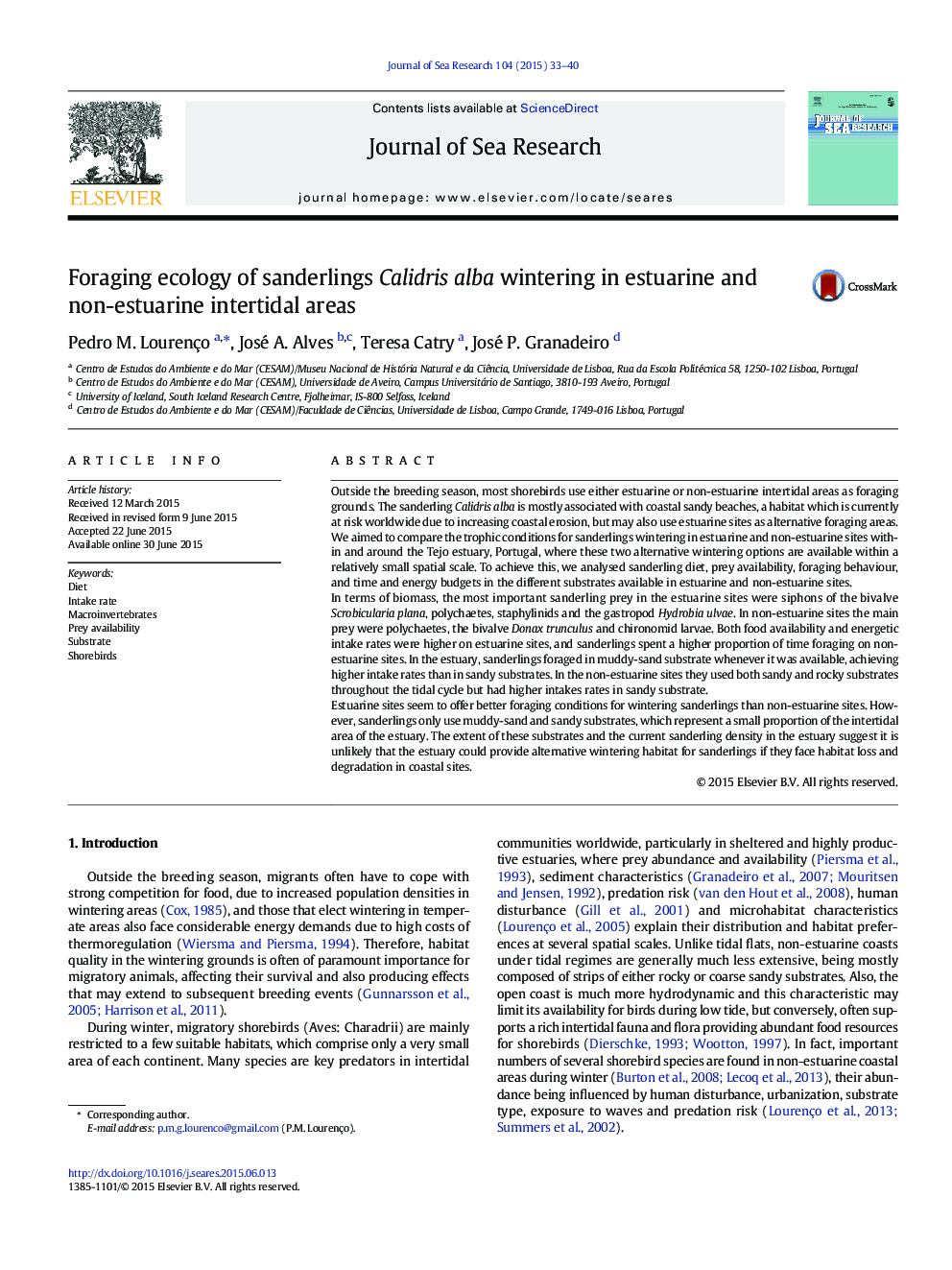| کد مقاله | کد نشریه | سال انتشار | مقاله انگلیسی | نسخه تمام متن |
|---|---|---|---|---|
| 4549625 | 1627470 | 2015 | 8 صفحه PDF | دانلود رایگان |
• We compared sanderling foraging ecology in coastal sites and estuarine sites.
• Both food availability and energetic intake rates were higher on estuarine sites.
• Most energy is obtained while foraging on muddy-sand substrates.
• Lack of muddy-sand areas limits the number of sanderlings the estuary can support.
Outside the breeding season, most shorebirds use either estuarine or non-estuarine intertidal areas as foraging grounds. The sanderling Calidris alba is mostly associated with coastal sandy beaches, a habitat which is currently at risk worldwide due to increasing coastal erosion, but may also use estuarine sites as alternative foraging areas.We aimed to compare the trophic conditions for sanderlings wintering in estuarine and non-estuarine sites within and around the Tejo estuary, Portugal, where these two alternative wintering options are available within a relatively small spatial scale. To achieve this, we analysed sanderling diet, prey availability, foraging behaviour, and time and energy budgets in the different substrates available in estuarine and non-estuarine sites.In terms of biomass, the most important sanderling prey in the estuarine sites were siphons of the bivalve Scrobicularia plana, polychaetes, staphylinids and the gastropod Hydrobia ulvae. In non-estuarine sites the main prey were polychaetes, the bivalve Donax trunculus and chironomid larvae. Both food availability and energetic intake rates were higher on estuarine sites, and sanderlings spent a higher proportion of time foraging on non-estuarine sites. In the estuary, sanderlings foraged in muddy-sand substrate whenever it was available, achieving higher intake rates than in sandy substrates. In the non-estuarine sites they used both sandy and rocky substrates throughout the tidal cycle but had higher intakes rates in sandy substrate.Estuarine sites seem to offer better foraging conditions for wintering sanderlings than non-estuarine sites. However, sanderlings only use muddy-sand and sandy substrates, which represent a small proportion of the intertidal area of the estuary. The extent of these substrates and the current sanderling density in the estuary suggest it is unlikely that the estuary could provide alternative wintering habitat for sanderlings if they face habitat loss and degradation in coastal sites.
Journal: Journal of Sea Research - Volume 104, October 2015, Pages 33–40
